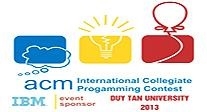16/03/2021 08:25:23 AM
Phần mềm-Ứng dụng
Testing Design Strategies
As a reader of this text, you have a goal to learn more about testing and how to become a good tester. You might be a student at a university who has completed some software engineering courses. Upon completing your
education you would like to enter the profession of test specialist. Or you might be employed by an organization that has test process improvement as a company goal. On the other hand, you may be a consultant who
wants to learn more about testing to advise your clients. It may be that you play several of these roles. You might be asking yourself, Where do I begin to learn more about testing? What areas of testing are important? Which topics need to be addressed first? The Testing Maturity Model provides some answers to these questions. It can serve as a learning tool, or framework, to learn about testing. Support for this usage of the TMM lies in its structure. It introduces both the technical and managerial aspects of testing in a manner that allows for a natural evolution of the testing process, both on the personal and organizational levels.
We begin the development of testing skills necessary to support achievement of the maturity goals at levels 2–3 of the Testing Maturity Model. TMM level 2 has three maturity goals, two of which are managerial in nature. These will be discussed in subsequent chapters. The technically oriented maturity goal at level 2 which calls for an organization to “institutionalize basic testing techniques and methods” addresses important and basic technical issues related to execution-based testing. Note that this goal is introduced at a low level of the TMM, indicating its importance as a basic building block upon which additional testing strengths can be built. In order to satisfy this maturity goal test specialists in an organization need to acquire technical knowledge basic to testing and apply it to organizational projects.
» Tin mới nhất:
- Những thủ thuật sử dụng Visual Studio Code (18/12/2025)
- Tools for TMM Level 1 (09/12/2025)
- Testing tools (09/12/2025)
- Bắt đầu với Docker – Phần 4: Docker Image và cách xây dựng với Dockerfile (05/12/2025)
- Evaluating Testing Tools for the Workbench (14/11/2025)
» Các tin khác:
- Tác dụng của các kiến thức phụ trợ (17/11/2020)
- The objective of testing Web (17/11/2020)
- Web Testing Challenges (17/11/2020)
- Ví dụ về quan hệ 1-1, 1-m (02/10/2020)
- Làm quen với Robot Framework (19/06/2020)
- Hướng dẫn cài đặt Robot Framework (19/06/2020)
- Debugging by Testing (18/01/2020)
- Debugging by Deduction (18/01/2020)
- Installation Testing (18/12/2019)
- Acceptance Testing (18/12/2019)












